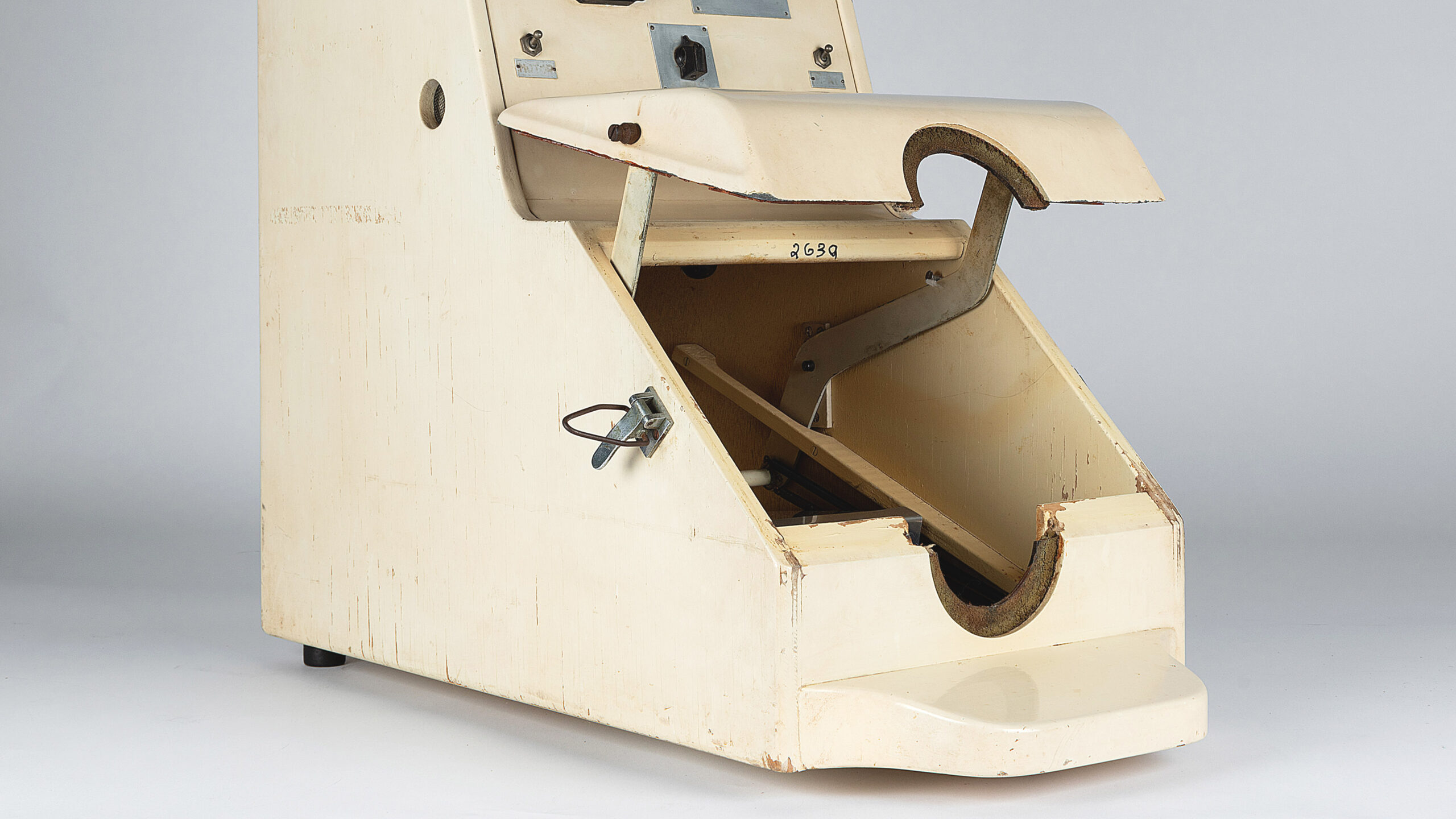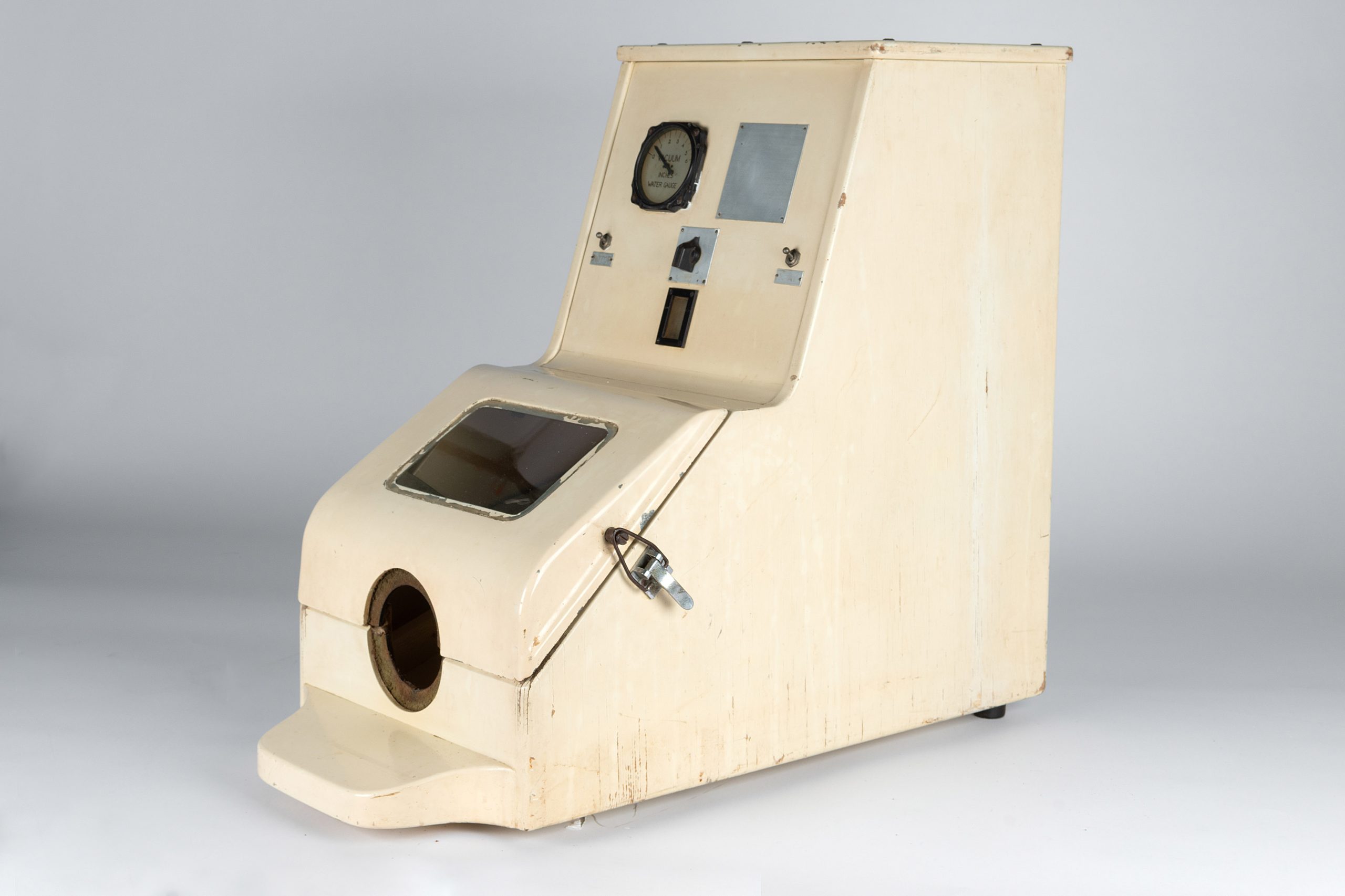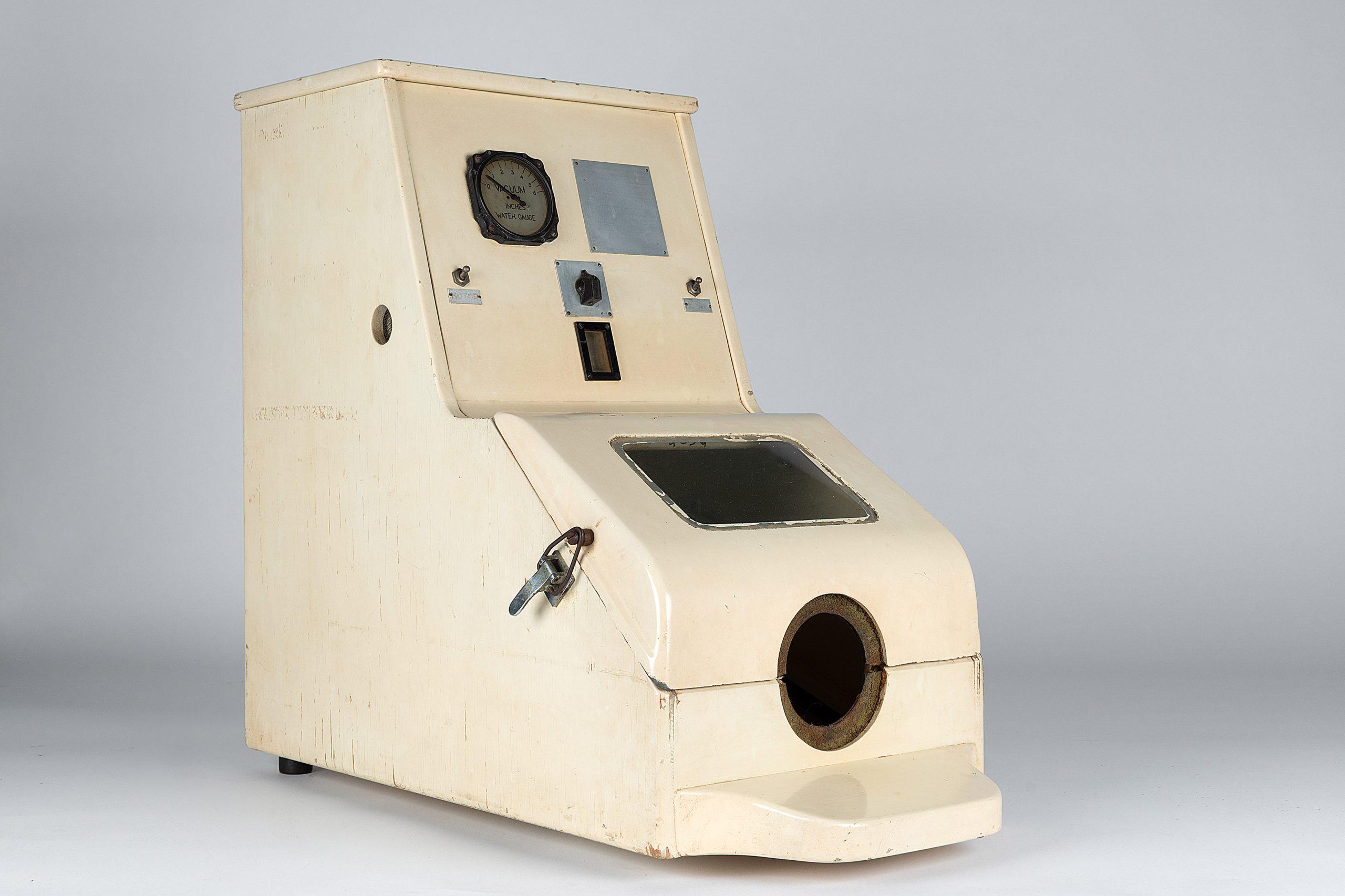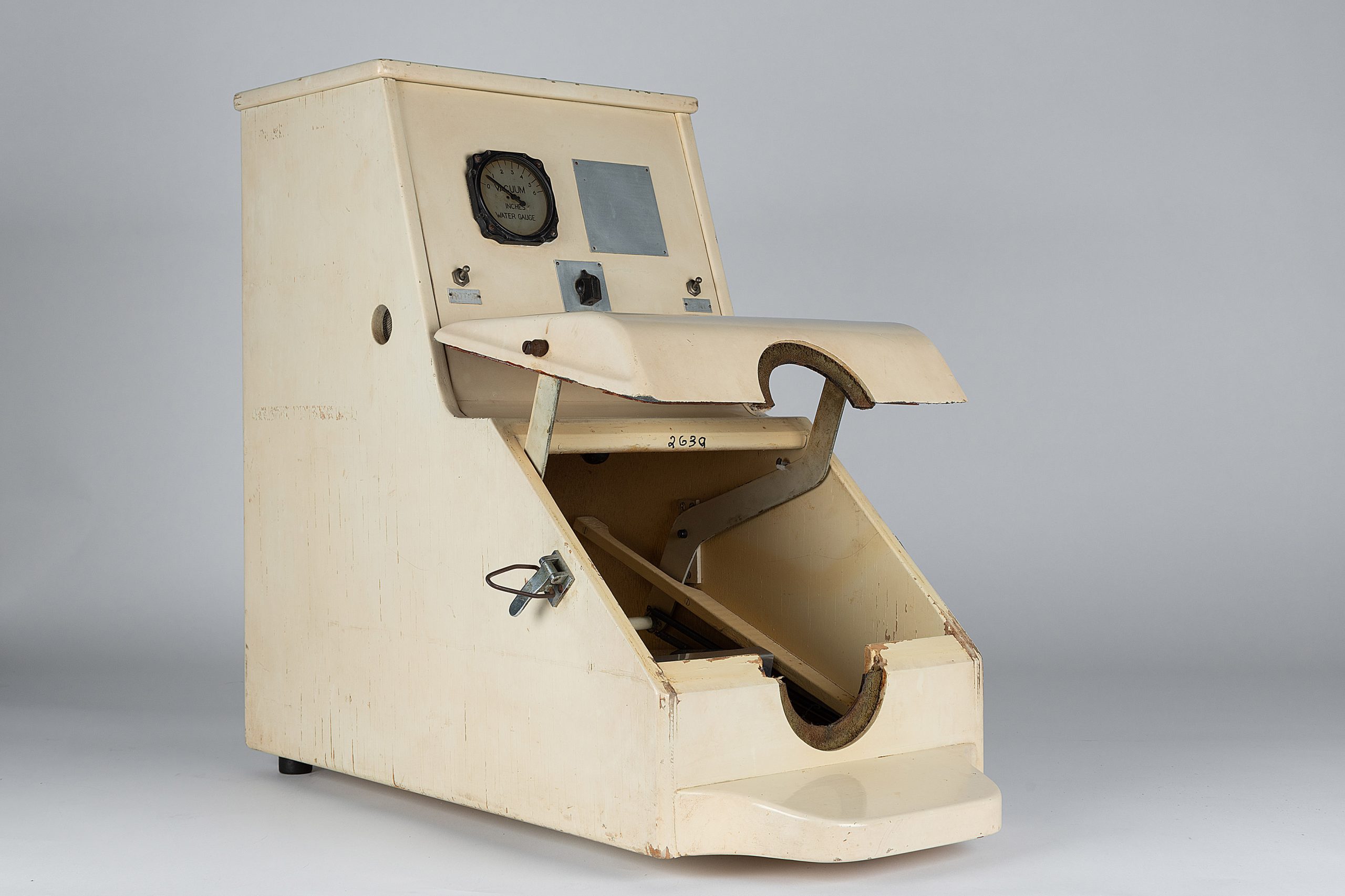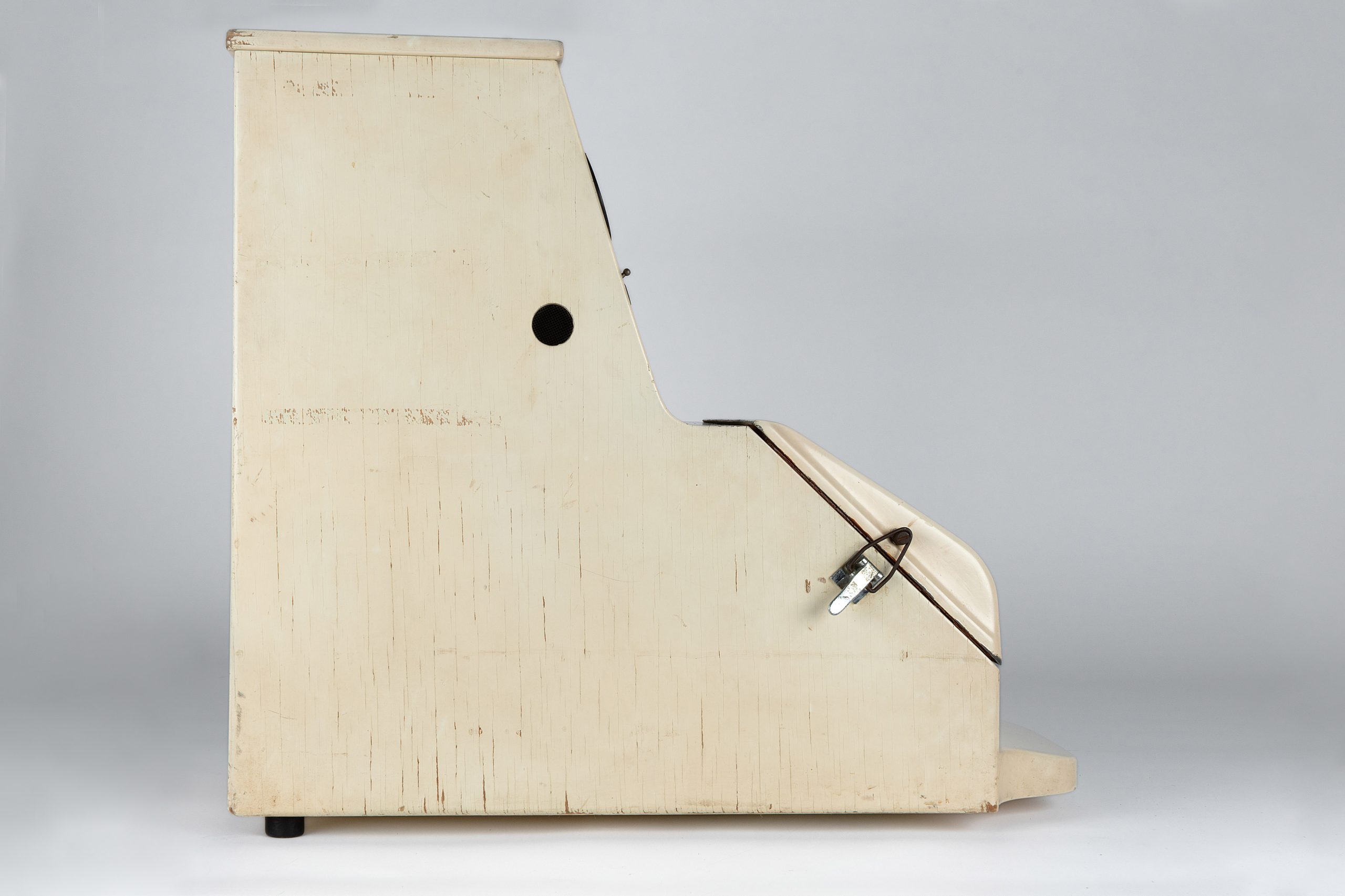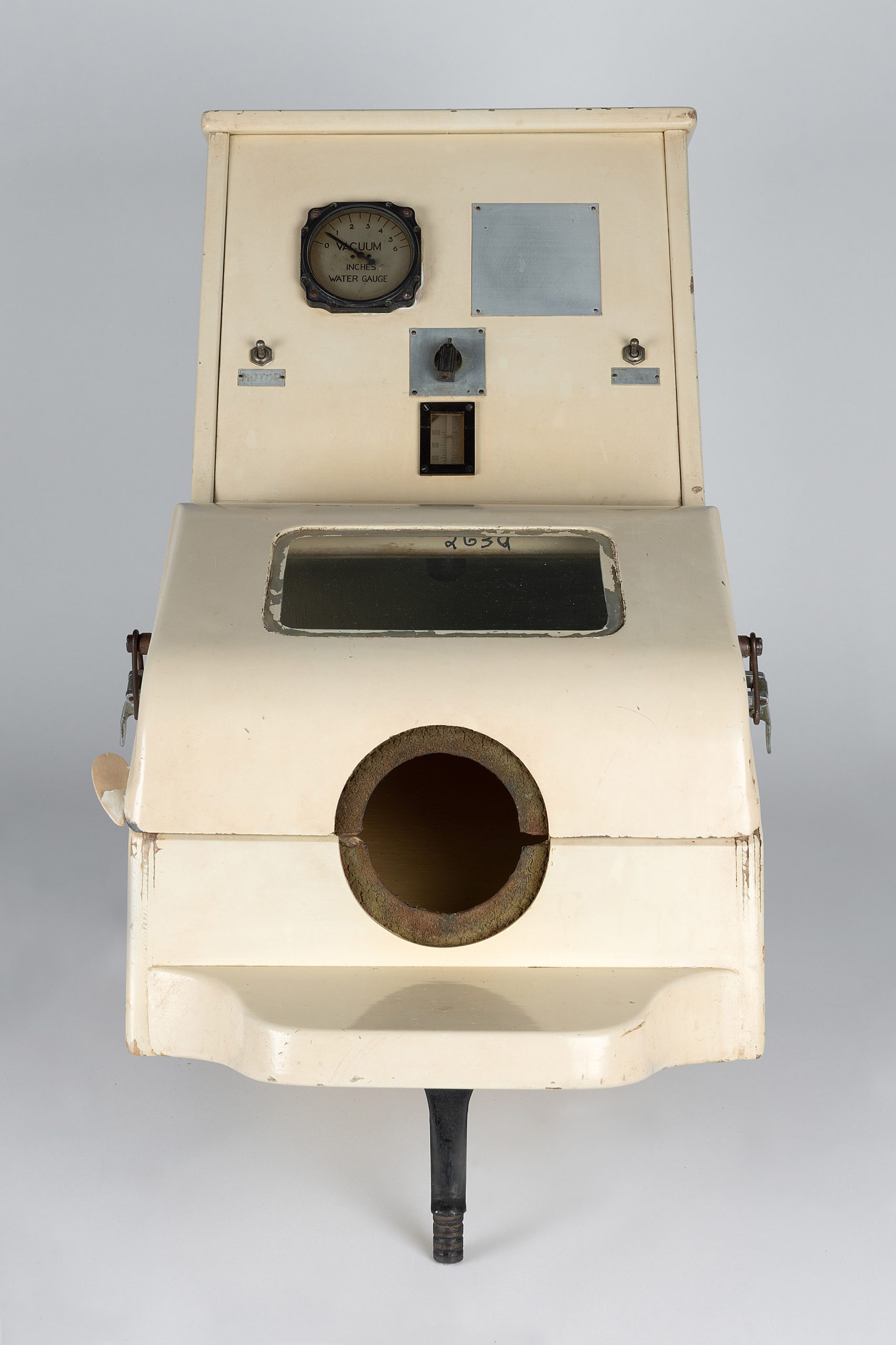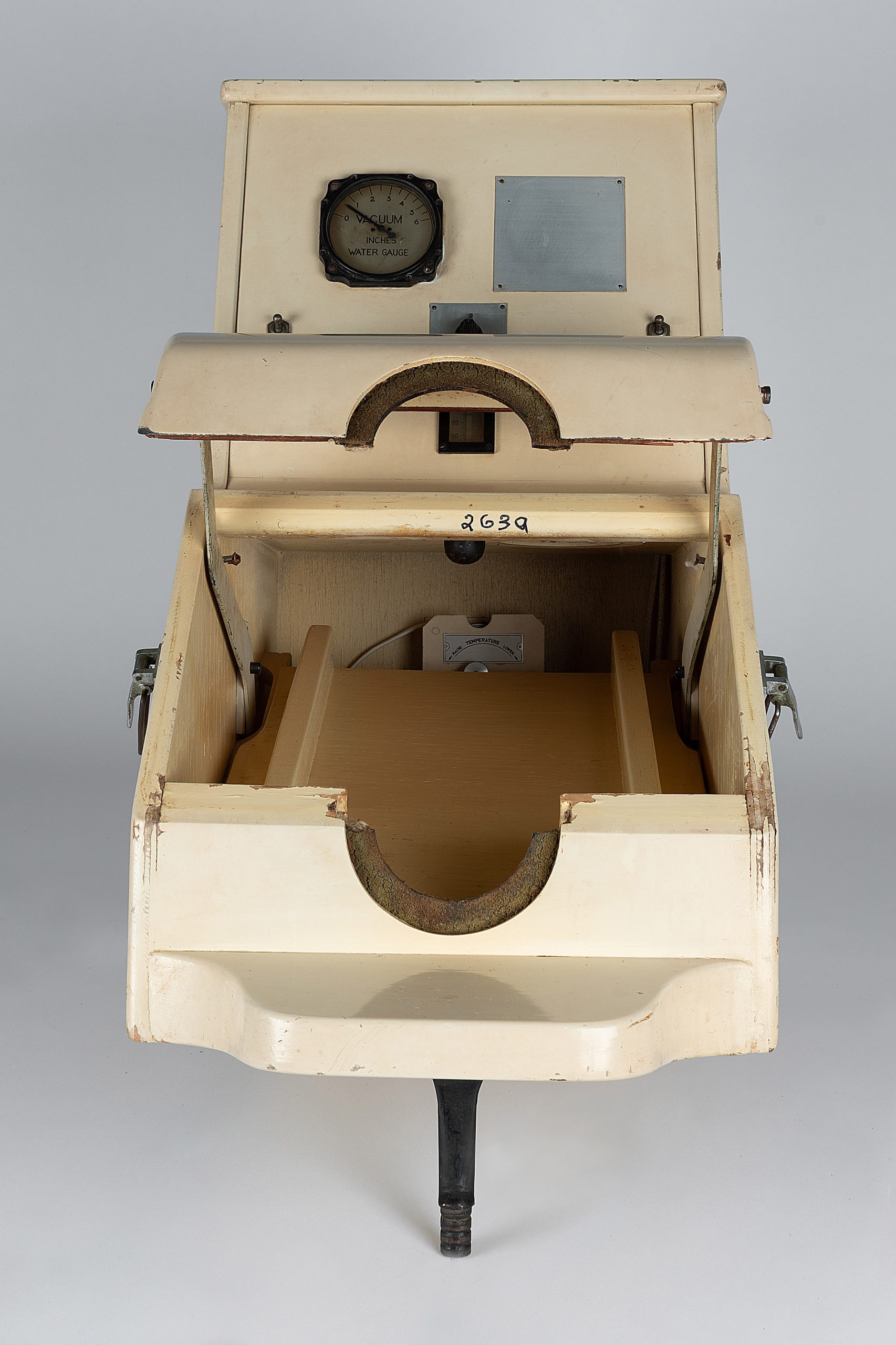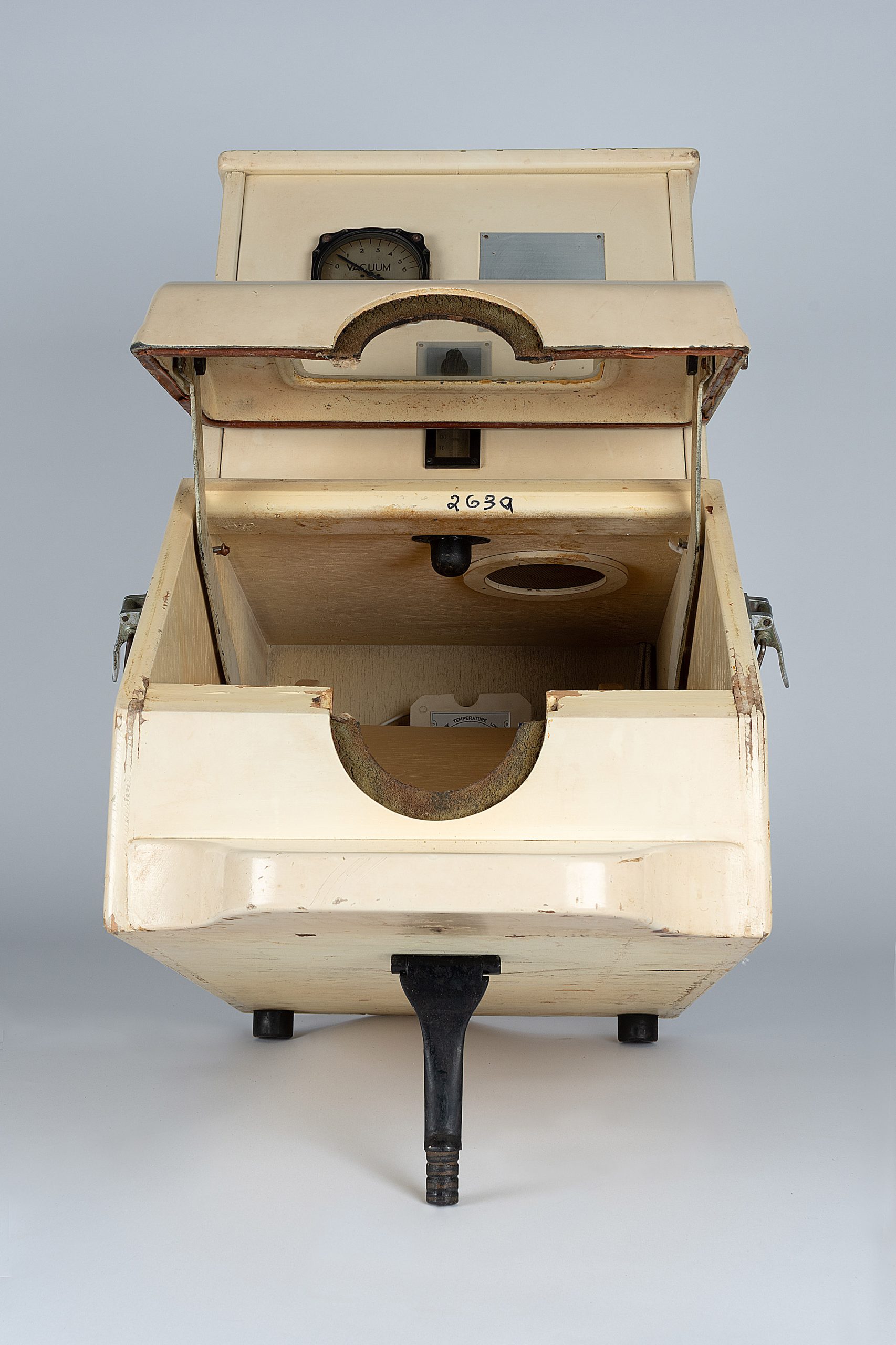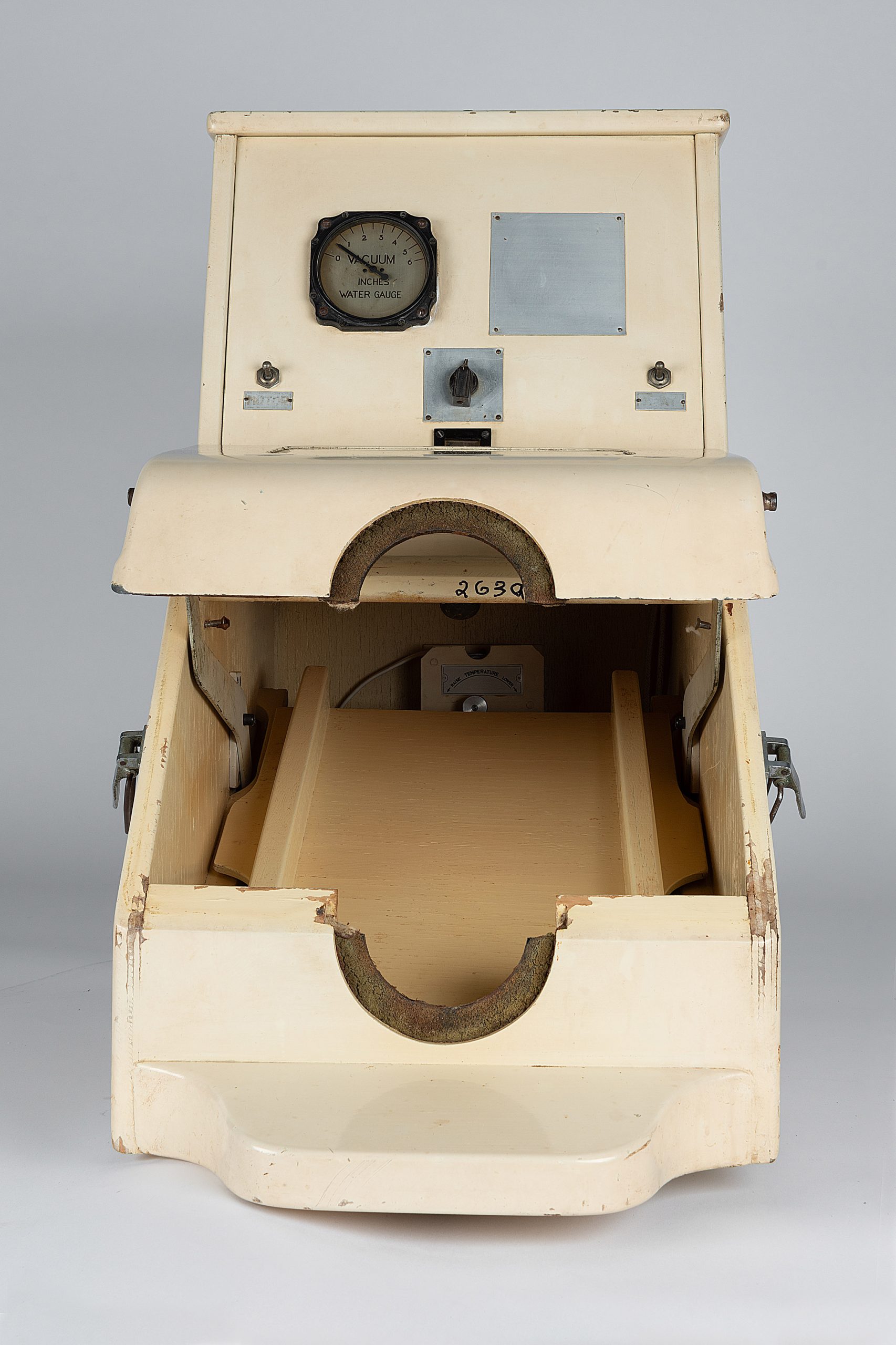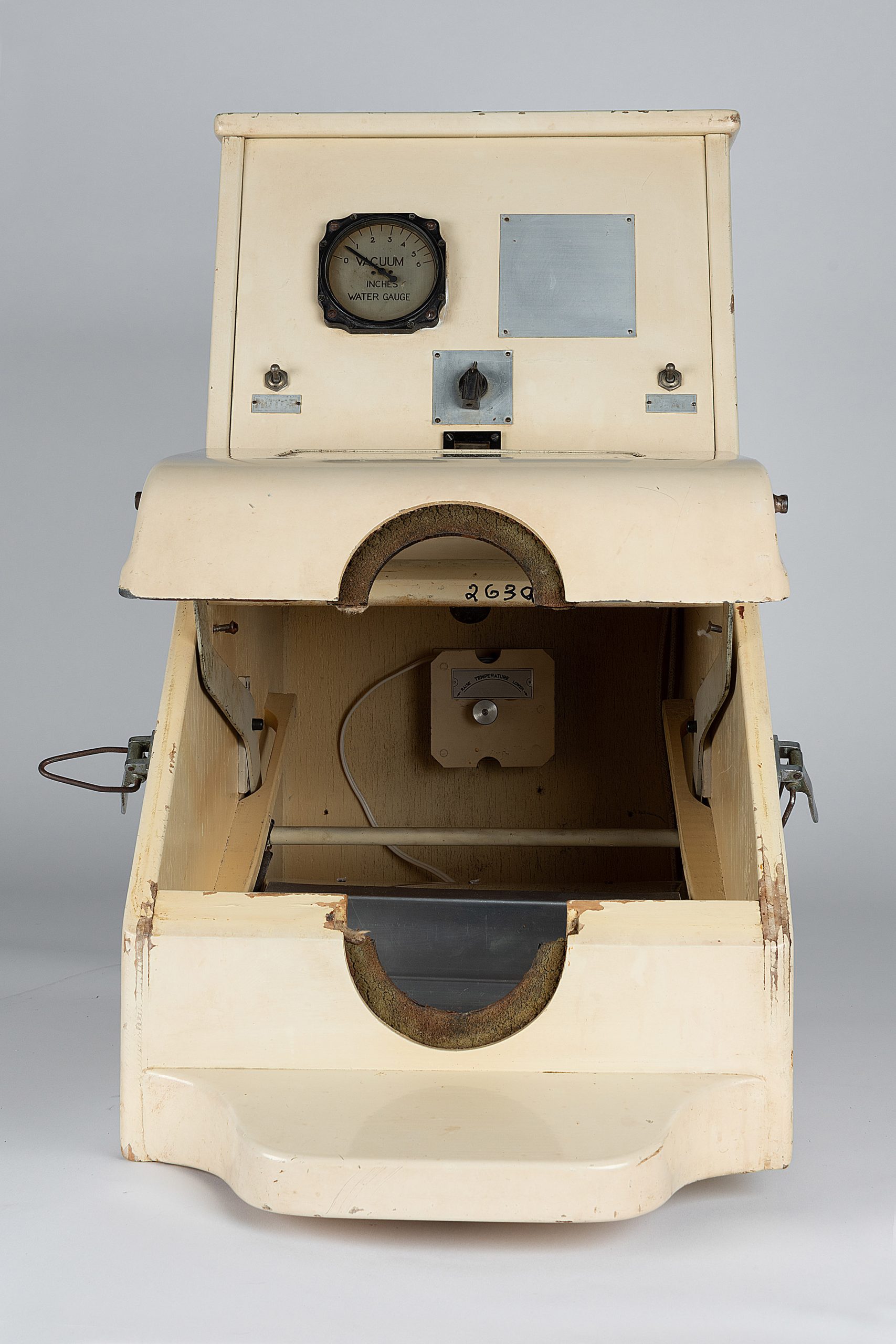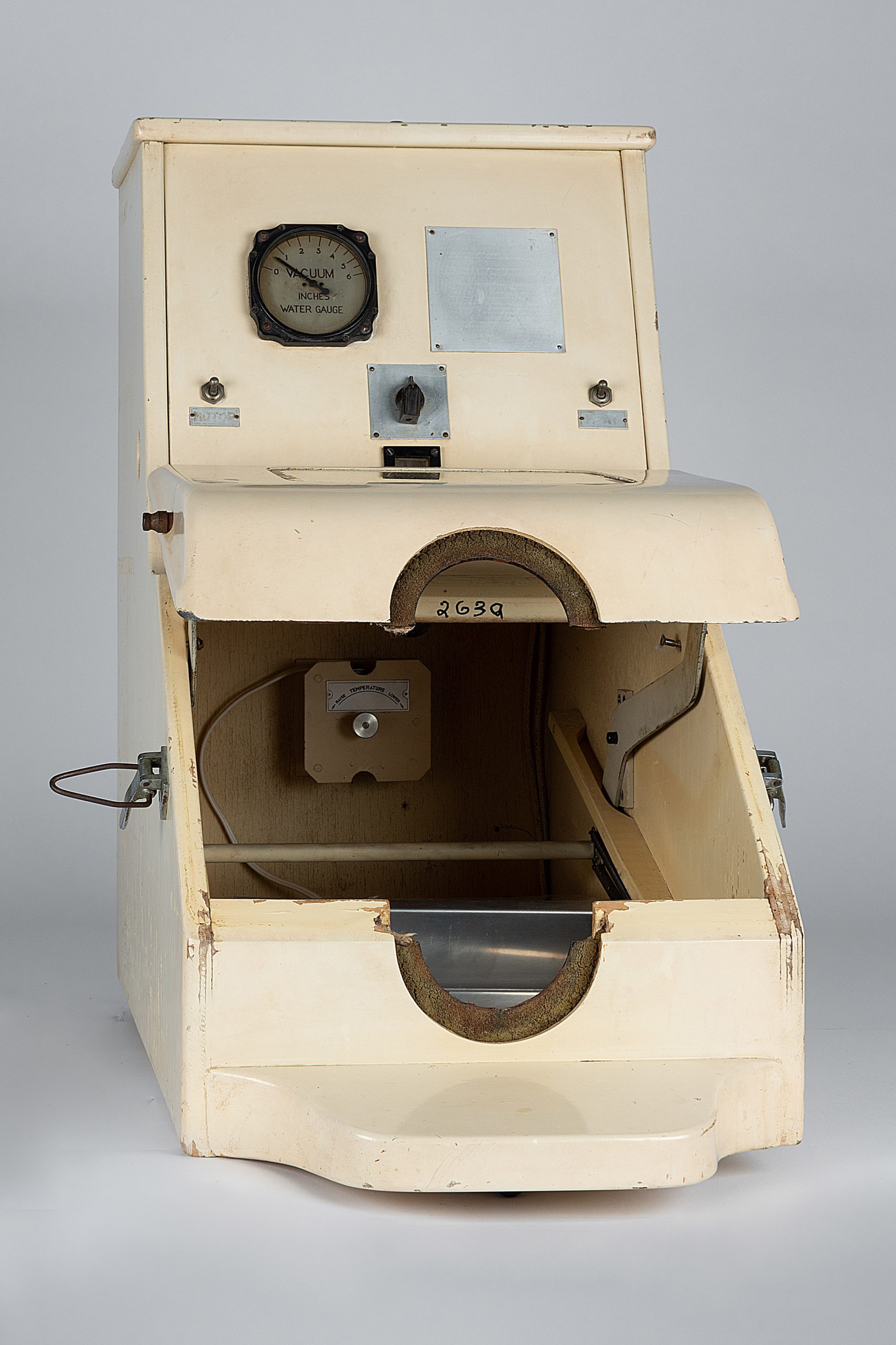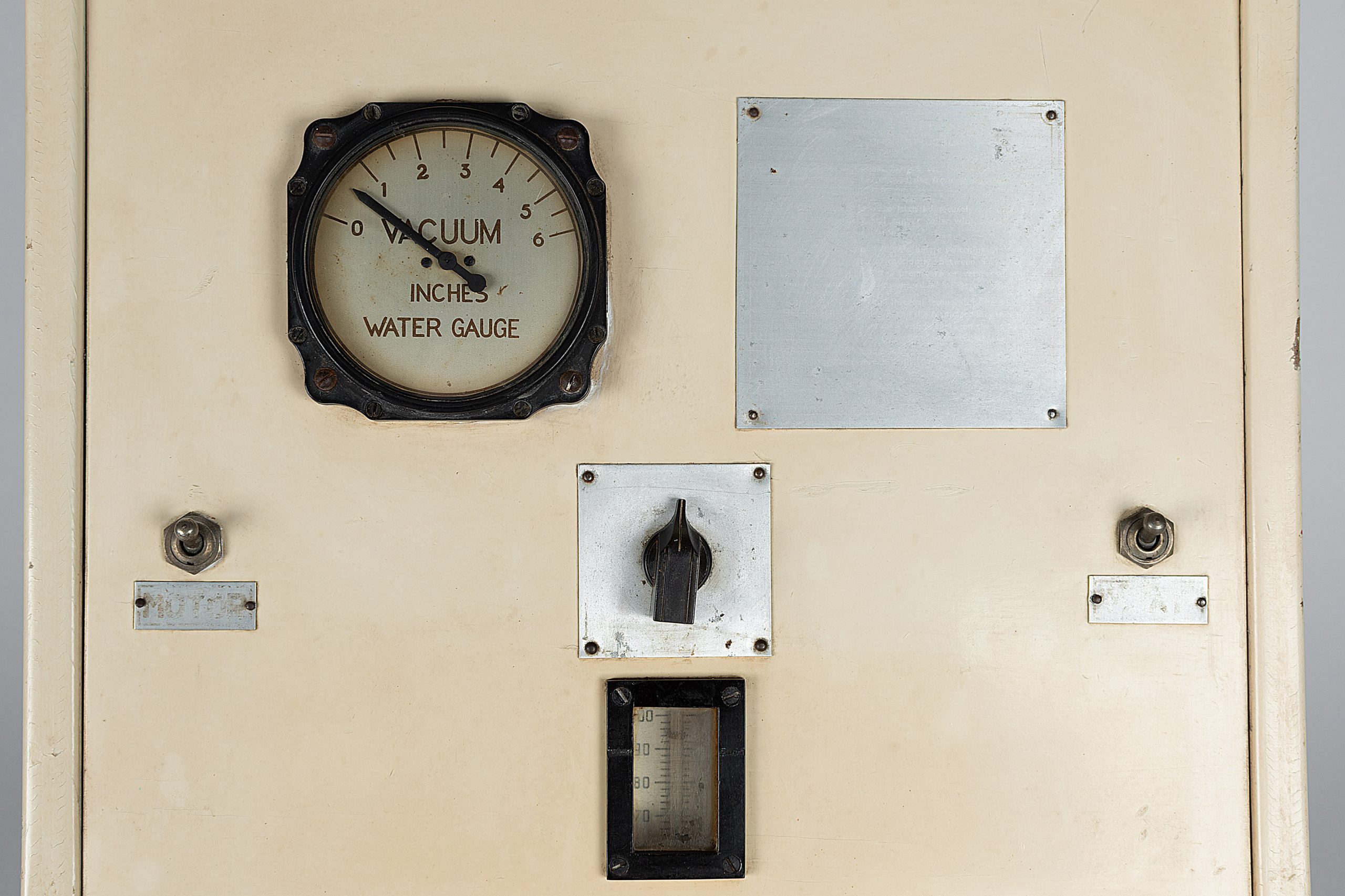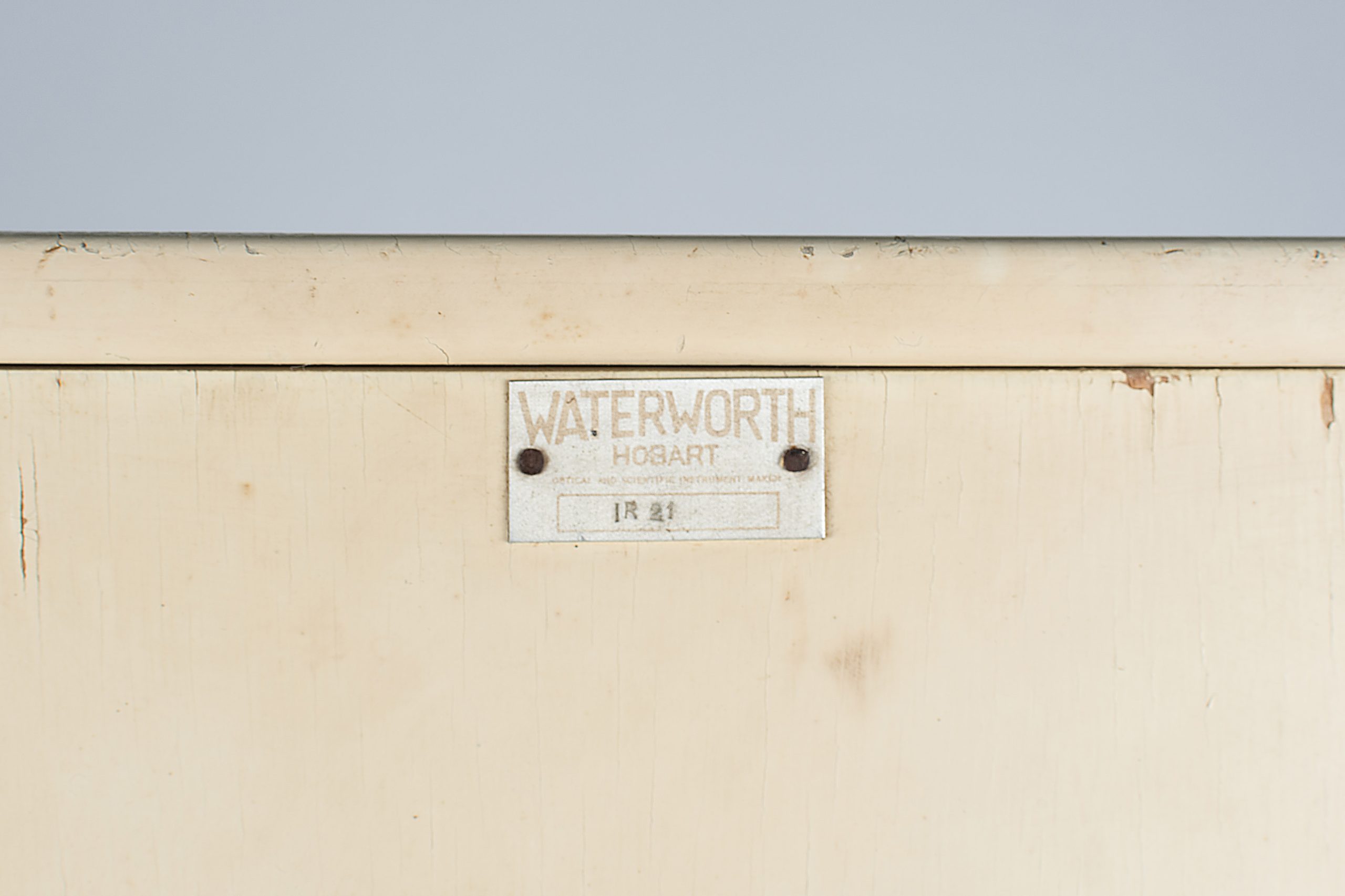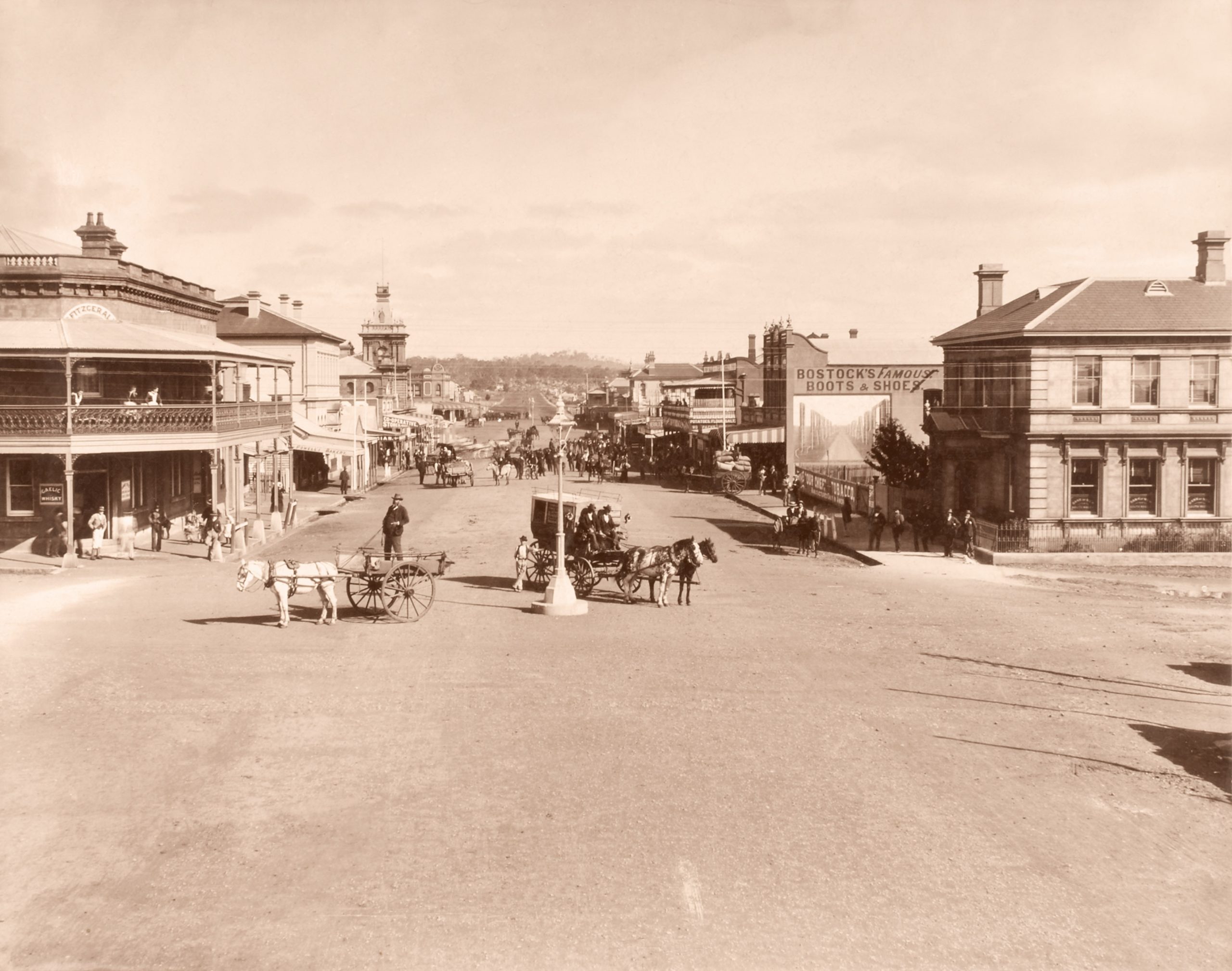A Charitable Contraption
How a Launceston Doctor Helped Newborns Take their First Breath
While this metal contraption might look a little scary, it provided life-saving support for hundreds of newborn babies who struggled to take their first breaths.
Dr William K. McIntyre (1881-1969), was a gynaecologist and obstetrician who practised in Launceston, Tasmania, on Kanamaluka county. McIntyre grew frustrated with the lack of options when it came to infant respiratory care.
In the 1940s, with the help of his son-in-law’s brother, Eric Waterworth, they designed and built a device, like an iron lung but adjusted for smaller bodies.
The infant’s body is placed inside of the machine with their head outside resting on a tray lined with cotton wool. A negative pressure vacuum is created inside the machine forcing the rib cage to expand and the diaphragm to contract, making air flow in and out of the lungs, simulating breathing.
This machine became an important piece of medical equipment, not just in Launceston, but across Australia. McIntyre himself became well known, and even had people travel from other states to receive his care. Towards the end of his career, McIntyre estimated that he had performed around 8000 deliveries, averaging about 600 per year from 1940-1945.
From this point on, neonatal medicine improved quickly. Mechanical breathing machines (ventilators) got smaller and more complex, and options for medical professionals have become more diverse and reliable. Old medical equipment such as this infant respirator are a good living example of how far we have come, and perhaps even prompt us to think about where we will be in another eighty or so years.


